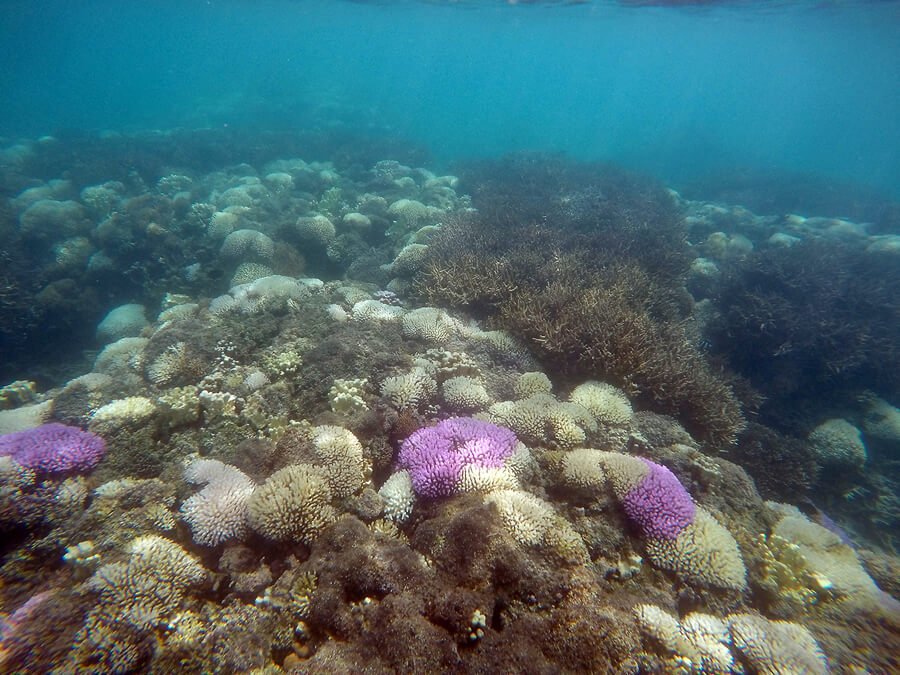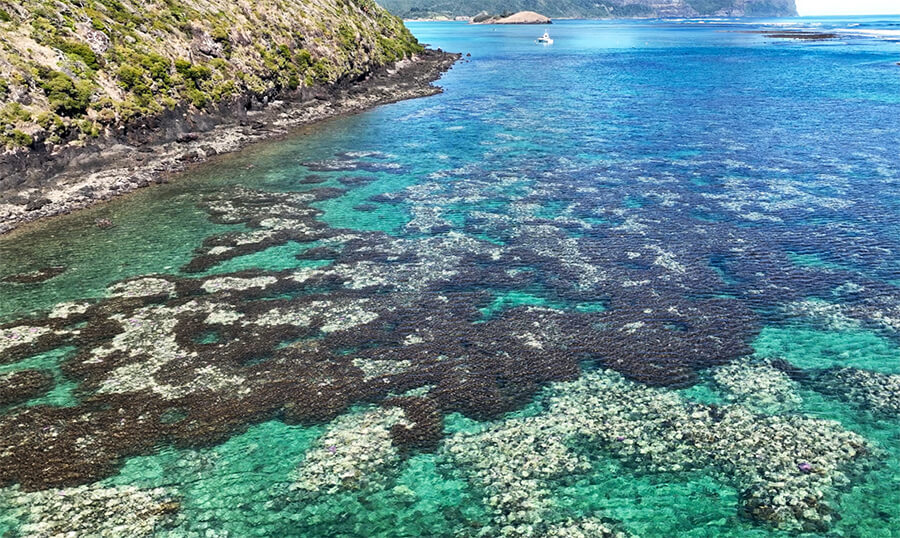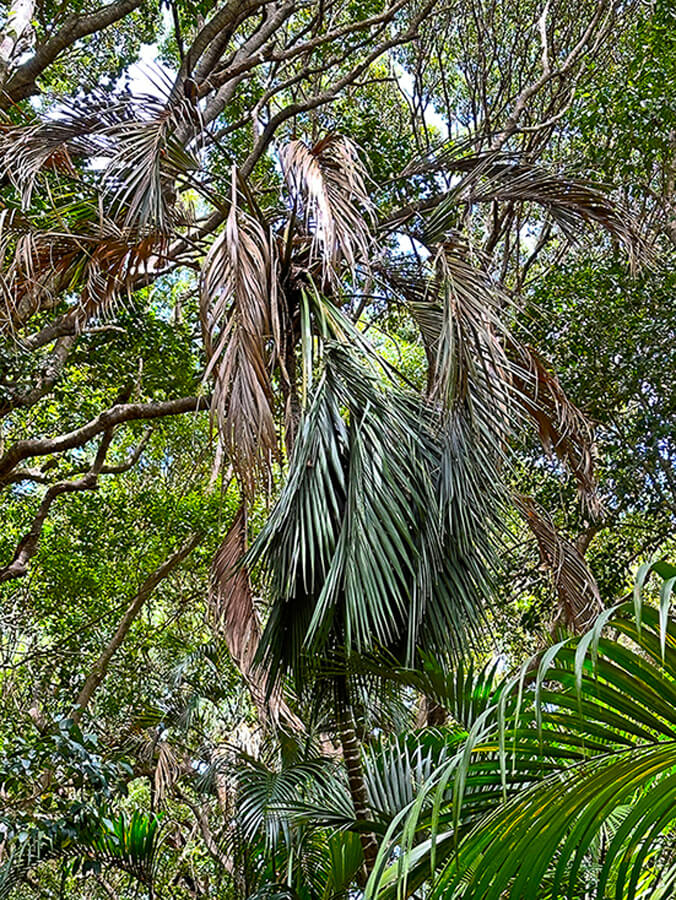Was summer 2023/2024 the hottest for Lord Howe Island?
It depends on how you read the Bureau of Meteorology data: maximums, minimums or average daily, etc. One way might be to add the minimum and maximum and divide by two to arrive at a daily average, and analyse those for years of records. But if we take a simple measure of the number of days with maximums over 28°C then summer of 2023/2024 was the hottest on record for Lord Howe Island. There were 36 days with maximum temperatures recorded over 28°C. The previous highest number of days over 28°C was 2018/2019 summer with 33 days. The accompanying graph show the number of days over 28°C each summer since 1988 (when the weather station was moved to the its current airport location). April is looking warmer than average with the first week having maximums 26°C and minimums 21°C compared to average 23°C and 18°C.
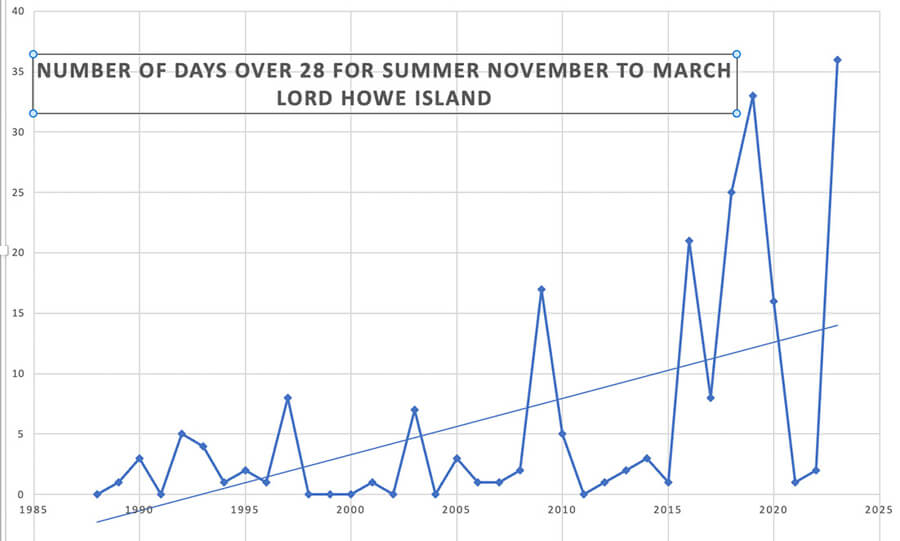
Also, January, February and March of 2024 were extremely dry – the driest 3-month January-February-March on record, with just 72.2 mm rainfall. The previous driest January-February-March was in 2014 which had 96.4mm rain. The long-term average rainfall for these three months on the Island is 337 mm.
These hot dry conditions have impacted the forest with many of the larger-leafed plants wilting, and even dying. I have heard many reports of residents with their favourite long-lived garden plants also dying this summer. Of most concern that I have seen is the collapse of the heads of 15 mature Curly palm trees in Steven’s reserve in February, along with about 60 smaller ones without a trunk yet. These palms may have been weakened by the water stress of the 2018/19 drought and this second one killed them. At some other areas across the Island there are scattered dead Howea palms – Transit Hill, Red Point, Signal Point.
In the last big dry period in summer 2018/2019, the forest on the summit of Mount Gower was severely impacted. This summer 2023/2024 we did have a lot of low cloud on the mountains which protected the summit forest, and when I was there in early February the cloud forest did not show much impact from the hot, dry weather. However, I have noted since then that there has not been much cloud on the summit, and the unique plants growing there may have been impacted since. (Note – the drought was eventually broken with 147mm rain on 9th and 10th April.)
Our record hot summer air temperatures are no doubt linked to the hot pool of water that was in the Tasman Sea surrounding Lord Howe Island for many weeks, as the surrounding ocean temperature determines our air temperatures.
This hot pool of water has had an impact on our marine environment. Kingfish have been hard to catch in January, February and March, as it believed they moved further away to cooler water. The Marine Parks and Lagoon tour operators have reported significant bleaching of certain coral types across the lagoon this summer, perhaps worse than the March 2019 bleaching event. The water has cooled a bit now and it is hoped that the bleached corals will recover, now that we are moving into autumn. However, research has shown that with frequent severe bleaching events there can be permanent damage to coral reefs.
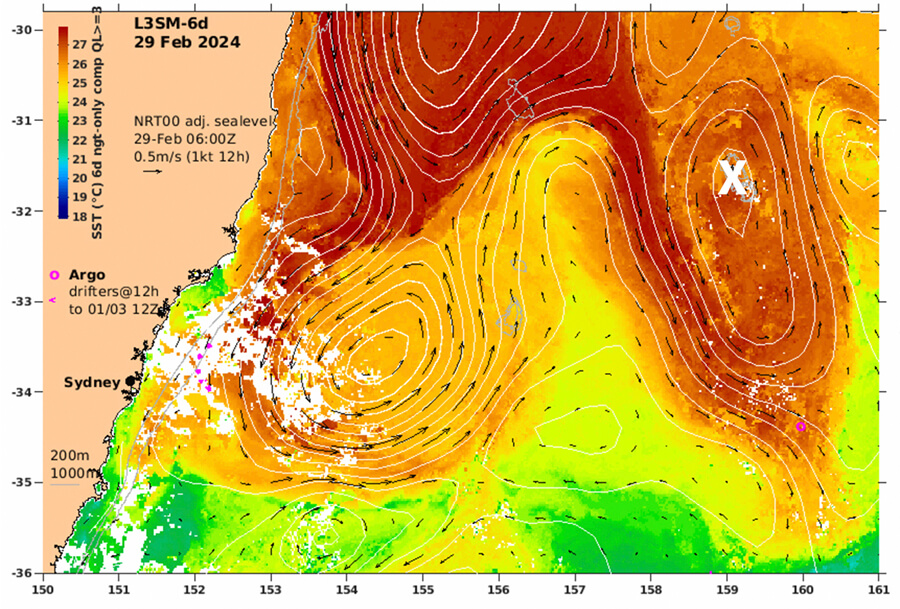
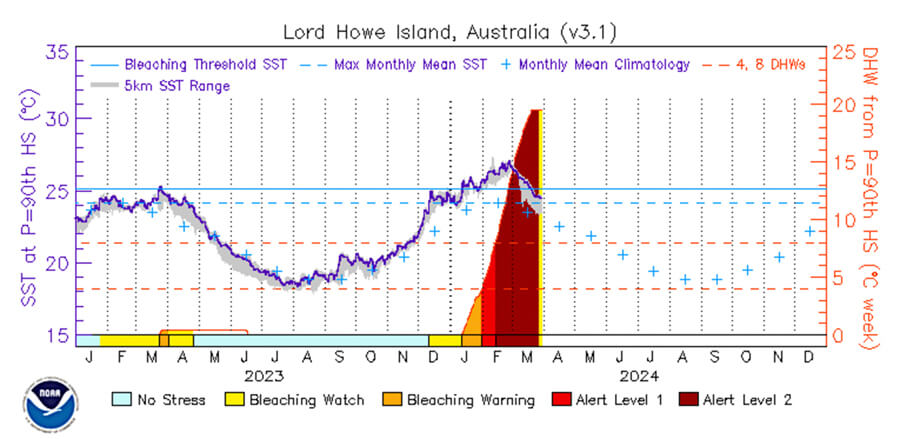
According to the World Meteorological Organisation State of the Global Climate 2023 report, 2023 was the warmest year on record, with the global average near-surface temperature at 1.45°C (with a margin of uncertainty of ± 0.12°C) above the pre-industrial baseline. It was the warmest ten-year period on record. Global climate records were shattered in 2023, from air and sea temperatures to sea-level rise and sea-ice extent. Scores of countries recorded their hottest year and numerous weather disasters occurred as climate change reared its head. Global average sea-surface temperatures (SSTs) were at a record high from April onwards, with the records in July, August and September broken by a particularly wide margin. Marine heatwaves are becoming more severe and frequent, with devastating consequences for iconic coral reefs, kelp forests and other marine ecosystems.
We all should be prepared for more variations in our climate, and more severe weather events that will affect the Island.
